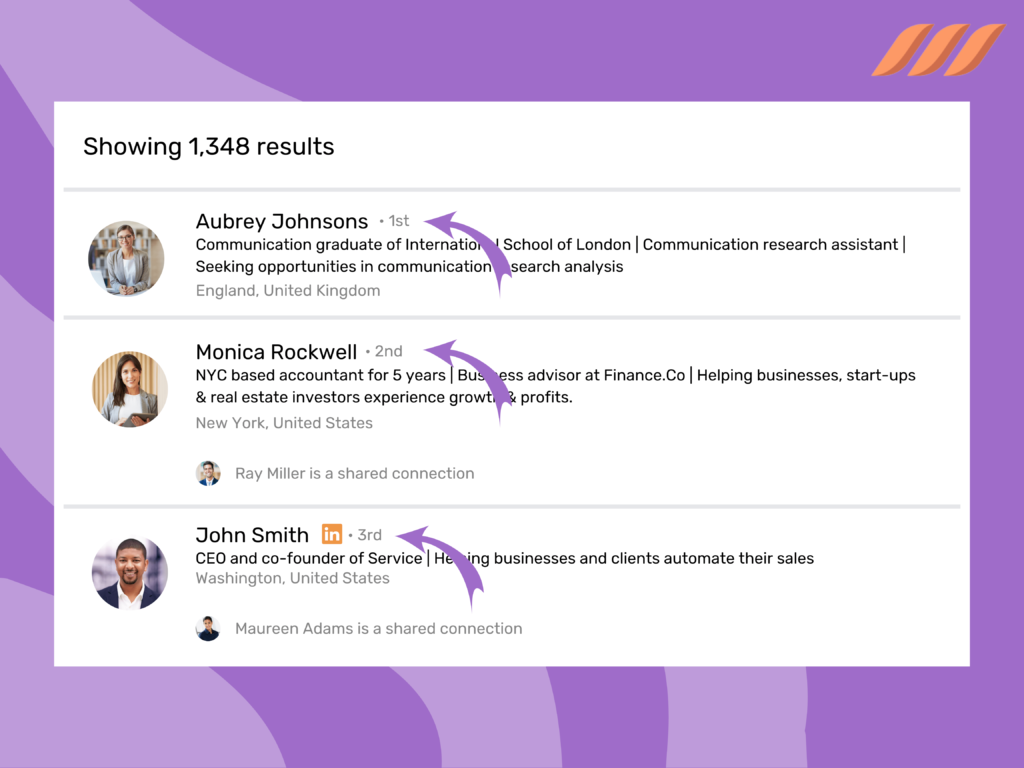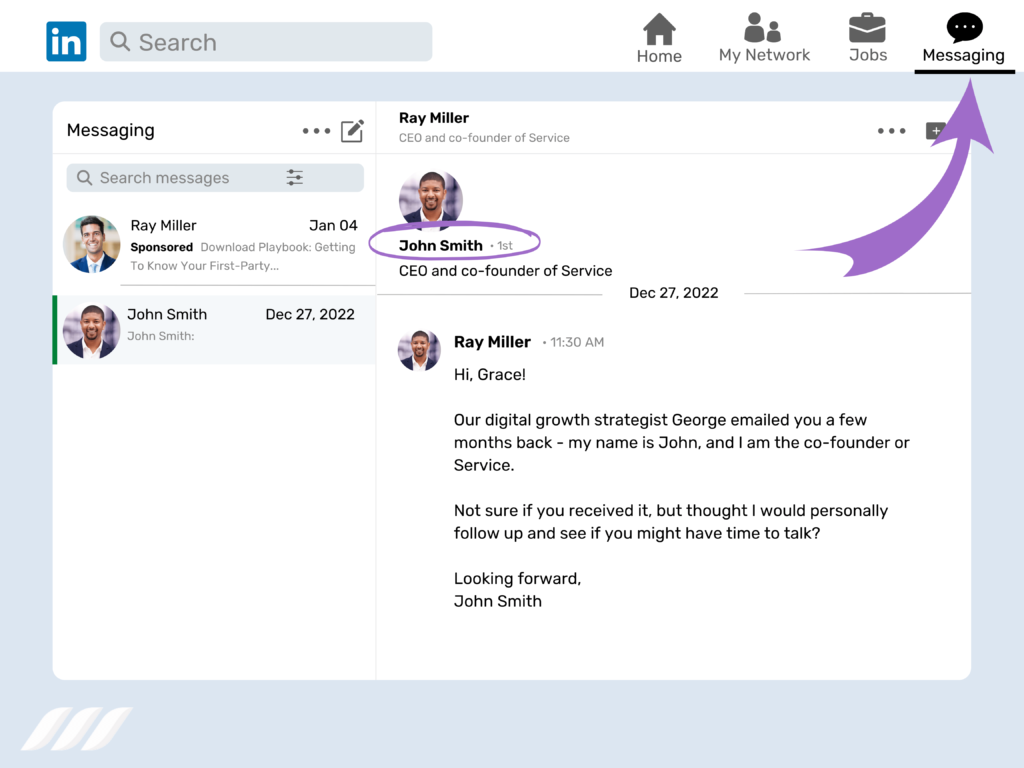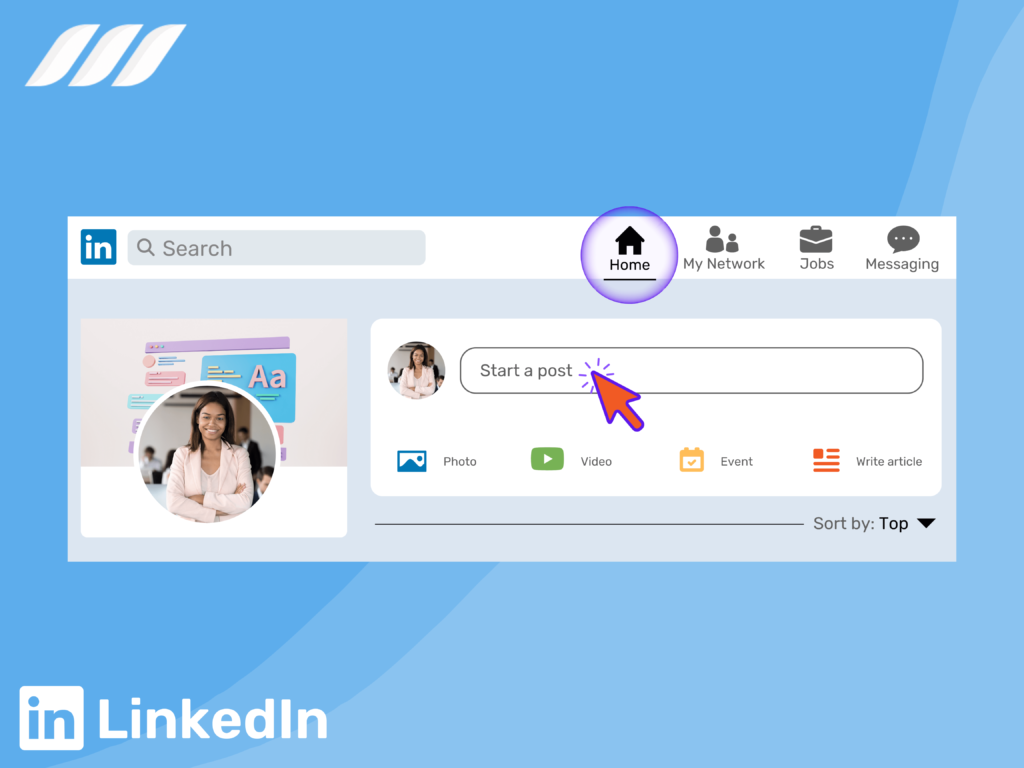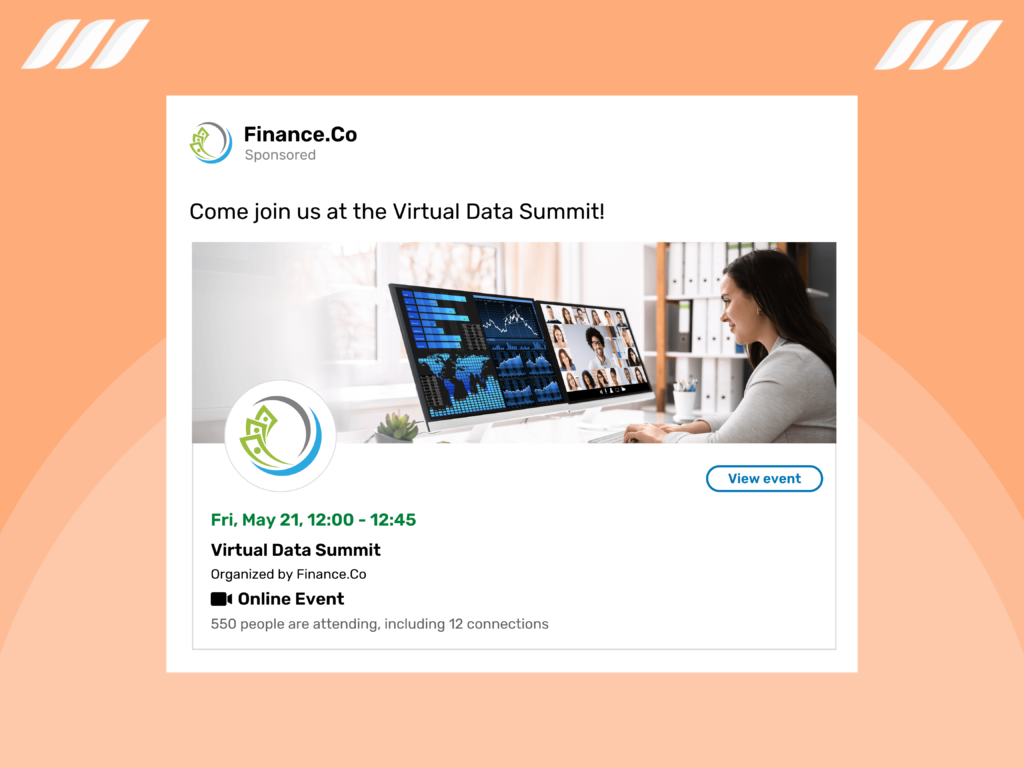|
Getting your Trinity Audio player ready...
|
LinkedIn allows you to build a professional network that can help you tap into career or business opportunities. The kind of connections you make on the social media platform will determine the types of opportunities you’ll have.
LinkedIn features three degrees of connection for its users. These are 1st-degree connections, 2nd-degree connections, and 3rd-degree connections. This post will discuss the difference between these connections and how you can reach these users on the network.

1st-Degree on LinkedIn
LinkedIn 1st degree connections are the people you’re directly connected to on LinkedIn. This results from either party accepting the invitation to connect.
With a 1st degree connection, you communicate directly through LinkedIn messaging. These types of connections are identified by a 1st-degree icon next to users’ names in search results and on their LinkedIn profiles.
2nd-Degree on LinkedIn
2nd-degree connections are those who don’t have a direct presence in your LinkedIn network. Instead, they are connected to your 1st-degree connections. Because of that, you can’t reach out to them directly.
To communicate with a 2nd degree, you can send an InMail if you have a premium account. They are identified by a 2nd degree icon next to their names in LinkedIn search results or their profiles.
3rd-Degree on LinkedIn
These LinkedIn users are connected to your 2nd degree connection. As with your 2nd degree connections, you can send them InMails to your 3rd degree connections. They can be identified with a 3rd degree icon next to their names in LinkedIn search results or their profiles.
Out of Network on LinkedIn
These are LinkedIn members who fall outside 1st, 2nd and 3rd Linkedin connections. By default, LinkedIn offers limited visibility and accessibility to out-of-network profiles. But, you can use LinkedIn Recruiter Professional Service (RPS) to unlock such profiles and contact them via InMail.
Related article: Best Prospecting Tips for Recruiters
How to Reach all 1st-Degree Connections on LinkedIn
Here are 4 ways you can use to start a conversation with your 1st connections on LinkedIn.
Messages – The most direct way to reach your 1st degree connection is using the messaging feature to initiate a private 1-1 conversation.

LinkedIn groups – You can engage in a group discussion with your 1st connections and send direct messages to 1st-degree group members.

Posts – Use LinkedIn posts to tell a story or share industry news or valuable information. Add hashtags or tag your connections to possibly increase your visibility.

Events – Use LinkedIn events to set up an inclusive environment and make your 1st degree connections feel valued.

How to Build your LinkedIn 1st-degree Connection Prospecting Process
Here’s how to plan and execute 1st degree connection prospecting in three simple steps.
Step1: Create a strong, professional brand
Having a powerful brand gives you a head start in your sales prospecting. Lead your prospects with insight. Share industry news and behind-the-scenes stories, join groups and engage in discussions.
Step 2: Research your prospects
Tailor your LinkedIn profile to what your prospects might be interested in. For that, visit their profile, follow their business, explore their interests, and participate in groups to be in tune with relevant discussions. Above all, be direct and ask insightful questions.
Step 3: Send a prospecting message
This is the time to offer something meaningful, relevant, and productive based on the research of your prospects. Your message has to be buyer-centric, focusing on the benefits they’d be getting. Use Dripify for LinkedIn outreach automation and send messages in bulk. Once you’ve piqued your prospect’s interest, request what you want out of your conversation in clear terms — may be a call, email exchange, or a referral.
Related article: Best Prospecting Tools for Business

How to Reach all 2nd-Degree Connections on LinkedIn
LinkedIn doesn’t allow you to send a direct message to your 2nd degree connections. But, there are four indirect ways you can reach your 2nd degree connections:
1. Get a premium account
LinkedIn’s premium version will give you access to InMails, which allows you to send messages to people outside your LinkedIn network.
2. Join LinkedIn Groups
Another way to get in touch with the “friends of friends” is by being in a mutual group. Start a discussion, answer questions, or add insights and you’ll hopefully find a way to take things from there.
3. Send Email
If your prospect has a publicly visible email address or they’ve allowed group members to access their email, you can use that to send them a message.
4. Leverage 1st-Degree Contacts
Once you visit your prospect’s profile, you’ll see your mutual contacts — people who’d be your 1st connections. You can request them to refer or introduce you to the person you’re interested in prospecting.
How to Build Your LinkedIn 2nd-Degree Connection Prospecting Process
Follow these three steps to get prospects out of 2nd-degree connections:
Step 1: Identifying 2nd-degree prospects

Use ID demographics to find your ideal client profile. Check “2nd Connections” in advanced search and then use filters like title, location, industry, and company.
Step 2: Request introductions
The database of 2nd connections will reveal your 1st connection behind. Request an introduction from them through the email address of your LinkedIn 1st-degree connection or direct messaging feature.
Step 3: Send a prospecting message

As with 1st-degree prospects, you can send a personalized message to your connection. Using your 1st connection as a commonality in the discussion this time is good.
Should You Reach Your 3rd-Degree Connections Directly?
Although you can send an invite to any LinkedIn member straight away, it’s not a good idea to do that with 3rd-degree connections. At the same time, getting your 2nd-degree connections to introduce you to their connections wouldn’t be effective since you haven’t yet established a strong relationship.
It is good first to reinforce your relationship with 1st and 2nd connections and then expand your network. Engage your 2nd connections to the point that you can connect with them and convert them into your 1st connections. Since their 1st contacts would become your 2nd-degree contacts, you’d have better prospecting chances.
Tips on How to Expand Your LinkedIn Network
Follow these networking best practices to grow your LinkedIn connections:
- Personalize your invitations instead of sending generic requests.
- Set realistic, time-bound goals to increase your LinkedIn connections.
- Explore relevant groups to demonstrate your knowledge and learn about your prospects.
- Post often to increase engagement opportunities and to establish brand authority.
- Make your content more visual as it gets more engagement and re-share rates.
- Engage with existing connections as it puts your profile in front of their networks.
- Optimize your profile using relevant keywords to increase its search engine results [SEO for LinkedIn].
- Publish articles as native content as it promotes your expertise on the given subject matter.

It is a good idea to include LinkedIn prospecting tools in your campaigns. Many tools allow you to automate the repetitive and administrative parts of prospecting, so you can focus on delivering a personalized, human experience in sales interactions. Plus, you can use the best LinkedIn automation tools to automate your messages, scale your productivity, and secure more leads.

![How to Write a Price Increase Letter [Tips, Examples, and Free Template]](https://dripify.io/wp-content/uploads/2021/12/27.png)
![How to Write an Effective Collaboration Email [+Templates]](https://dripify.io/wp-content/uploads/2023/05/13.png)



